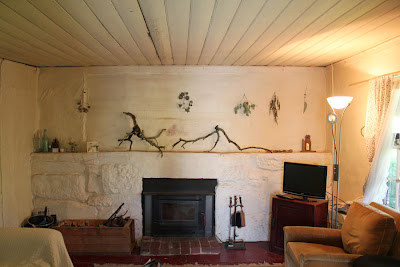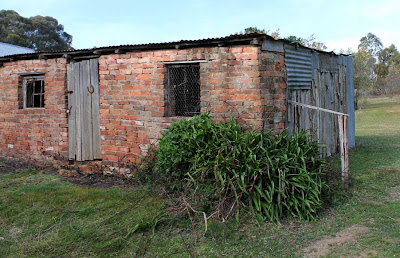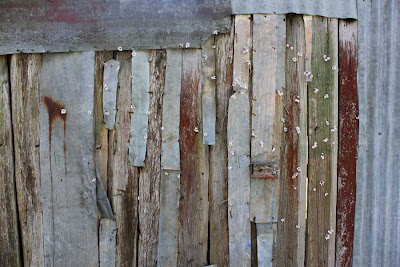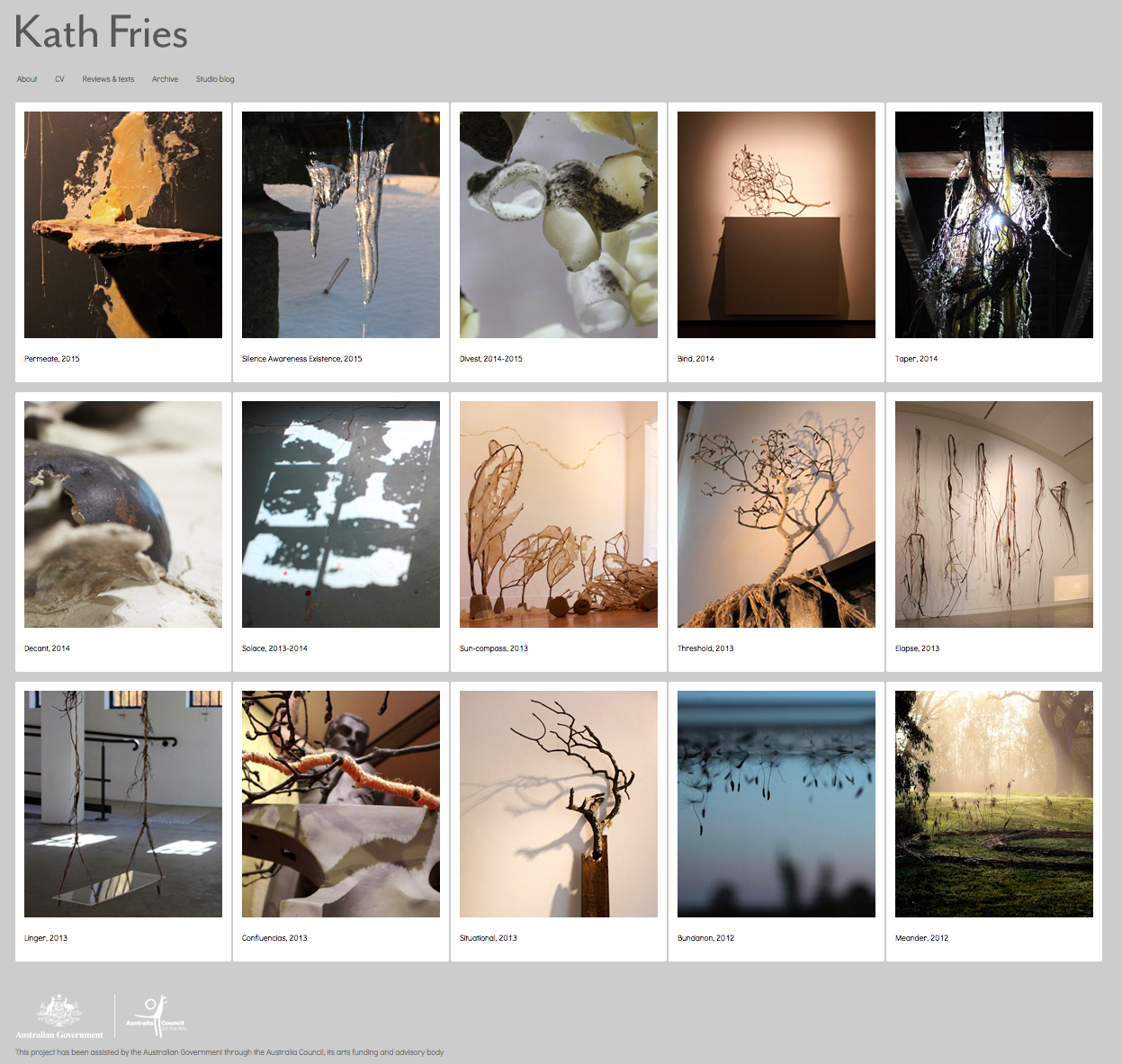Sunday 22 September 2013 was the third annual Hill End Open Studio Day and my artist-in-residence studio space at Murray's cottage was open to the public along with ten others: Lino Alvarez, Mark Booth, Bill Moseley & Genevieve Carroll, Luke Sciberras, Rosemary Valadon, Glenn Woodley, Rebecca Wilson, Ana Young, Brooke Thompson and Helen Earl. Hill End has a vibrant artistic community, even though my stay is only temporary and Hill End hosts over 30 artists-in-residence every year, I feel that I've been warmly welcomed here. The enthusiastic level of public interest in this uniquely creative corner of the world was evident by the number of keen visitors on Open Studio Day.
 |
Kath Fries, Mistletoe sculpture and beeswax window installation (morning),
Murray's cottage studio Hill End AIR, 2013
|
 |
| Kath Fries, Transient floor shadows - beeswax window installation (morning), Murray's cottage studio, Hill End AIR, 2013 |
 |
| Kath Fries, Beeswax window installation with transient floor shadows (midday), Murray's cottage studio, Hill End AIR, 2013 |
 |
| Kath Fries, Beeswax window installation with transient floor shadows (afternoon),
Murray's cottage studio, Hill End AIR, 2013
|
I was able to finish my beeswax and blossom petal window installation just in time for Open Studio Day (see work in progress). Fortunately the weather obliged with a beautiful sunny morning and the beeswax was illuminated by sunlight filtering into the studio from outside and the installation's shadows cast across the studio floor gradually shifted over the course of the morning as the sun moved across the sky. Thin semi-melted, disintegrating pieces of beeswax studded with blossom petals, melded into the grid of the old window frame. A sense of decay extended from the dilapidated sagging hessian, wattle and daub walls of the cottage and the subtle uneven streaks and bubbles within the old glass of the window panes. Just as the heritage cottage marks the passage of time as its fragile surfaces weather and change, this installation reflects my experience of both the season and daily passage of time during the first three weeks of my residency. Outside the bees busily continue to go about their business, but trees that were blossoming when I first arrived have now lost all their petals to the hot dry wind, followed by freezing torrential rain… and other trees that appeared stark and almost dead then, are now bursting with new leaves.
 |
Kath Fries, Beeswax and petal window installation,
Murray's cottage studio Hill End AIR, 2013
|
 |
| Kath Fries, Beeswax and petal window installation, Murray's cottage studio Hill End AIR, 2013 |
 |
| Kath Fries, Beeswax and petal window installation, Murray's cottage studio Hill End AIR, 2013 |
 |
| Kath Fries, Beeswax and petal window installation, Murray's cottage studio Hill End AIR, 2013 |
 |
| Kath Fries, Beeswax and blossom petal window installation, Murray's cottage studio Hill End AIR, 2013 |
 |
| Kath Fries, Visiting bee outside the beeswax window installation, Murray's cottage Hill End AIR, 2013 |
Mistletoe found object sculptures and drawings were also presented in my open studio and throughout the cottage (see work in progress). The uncanny animated shapes of these branches and the unusual haustorium, make these parasitic plants seem like sneaky scurrying aliens about to scuttle off and cause mischief.
 |
| Kath Fries, Mistletoe - found object sculpture, Murray's cottage Hill End AIR, 2013 |
 |
| Kath Fries, Mistletoe - found object sculptures and liquid graphite stick drawings, Murray's cottage Hill End AIR, 2013 |
 |
| Kath Fries, Mistletoe - found object sculpture, Murray's cottage Hill End AIR, 2013 |
 |
Kath Fries, Mistletoe - found object sculptures,
Murray's cottage Hill End AIR, 2013
|
 |
Kath Fries, Mistletoe - found object sculpture,
Murray's cottage Hill End AIR, 2013
|
 |
| Kath Fries, Mistletoe - found object sculpture, Murray's cottage Hill End AIR, 2013 |
 |
| Kath Fries, Mistletoe - found object sculpture, Murray's cottage Hill End AIR, 2013 |
This cottage is named after Donald Murray, who lived here for over thirty years, he wrote "...artists are observant but selective in their observations. The surroundings of Hill End, both village and countryside, provide both material and time to observe without the distractions (stimulating though they are) that are inseparable from city life... We less fortunate mortals, have the unfortunate habit of being attracted by the obvious, the meretricious and showy, and wonder why we are so quickly bored. We can maybe learn the lessons of observation that artists of all time have taught us. The charms and beauties of Hill End are not easy to define. Much of it all is subtle and subtlety is not a very popular quality, particularly in this present age. We can be grateful to those artists who have carried some of the beauty and interest of this part of Australia to other lands and people."
(Donald Murray, November 1958, The Western Times)
 |
| Kath Fries, Mistletoe - found object sculptures, above the fireplace Murray's cottage Hill End AIR, 2013 |
 |
| Kath Fries, Mistletoe - found object sculpture, by the front door of Murray's cottage Hill End AIR, 2013 |
I would like to thank Hill End artist-in-residence program www.hillendart.com.au, Bathurst Regional Art Gallery (BRAG) www.bathurstart.com.au and National Parks, for the opportunity to spend four weeks at Murray's cottage.
































































%2BWhite%2C%2BBRANCH%2B3d.jpg)














.jpg)














